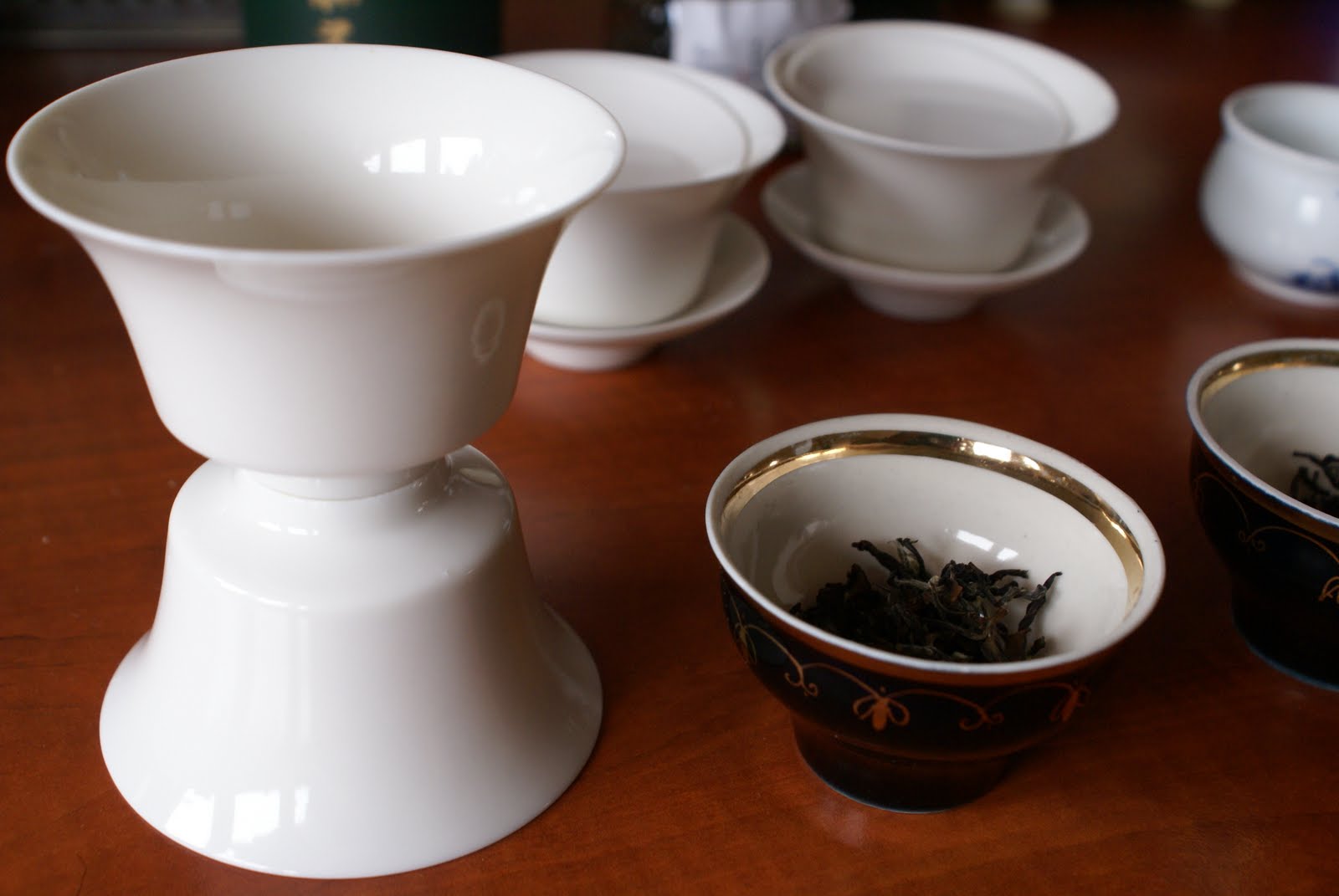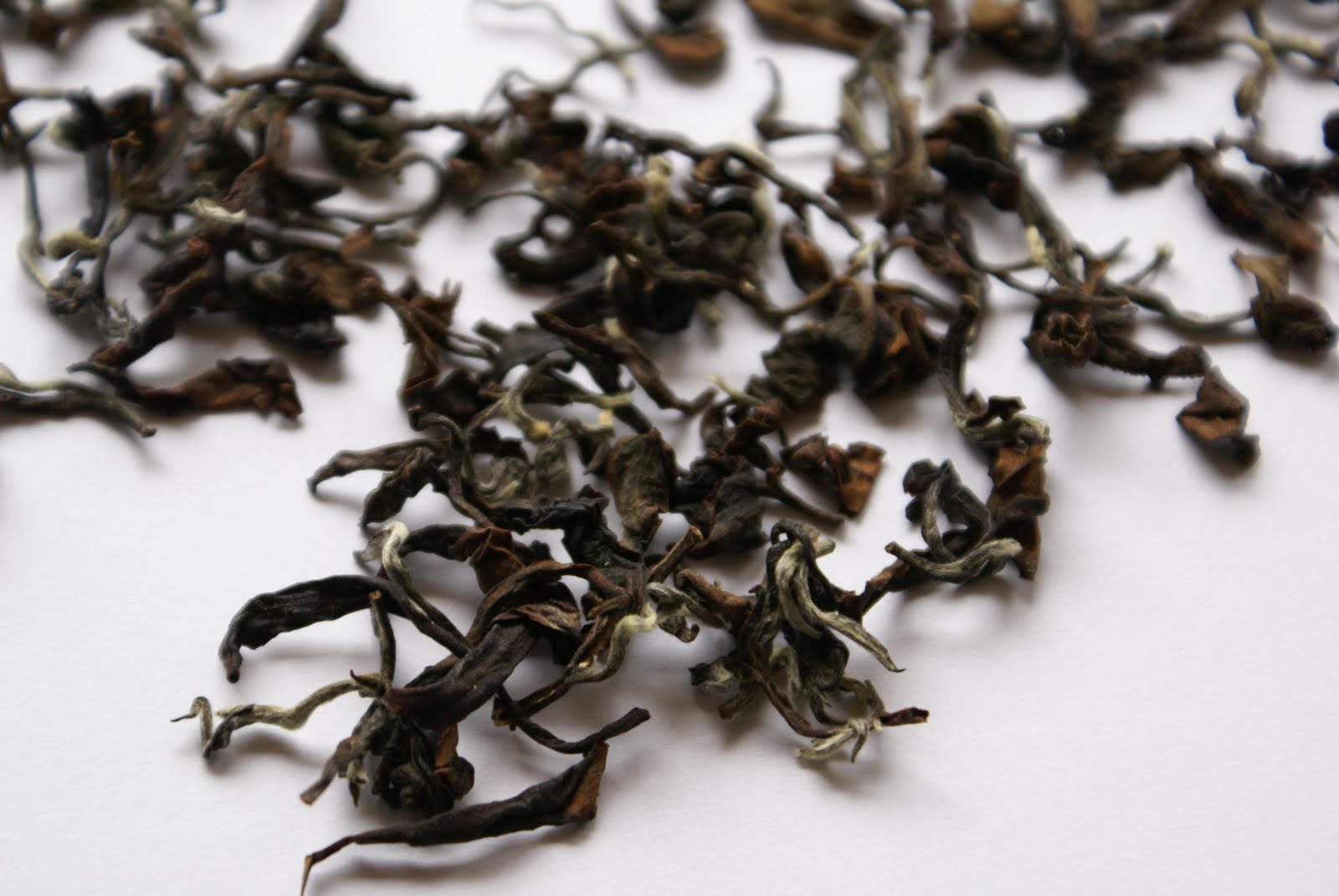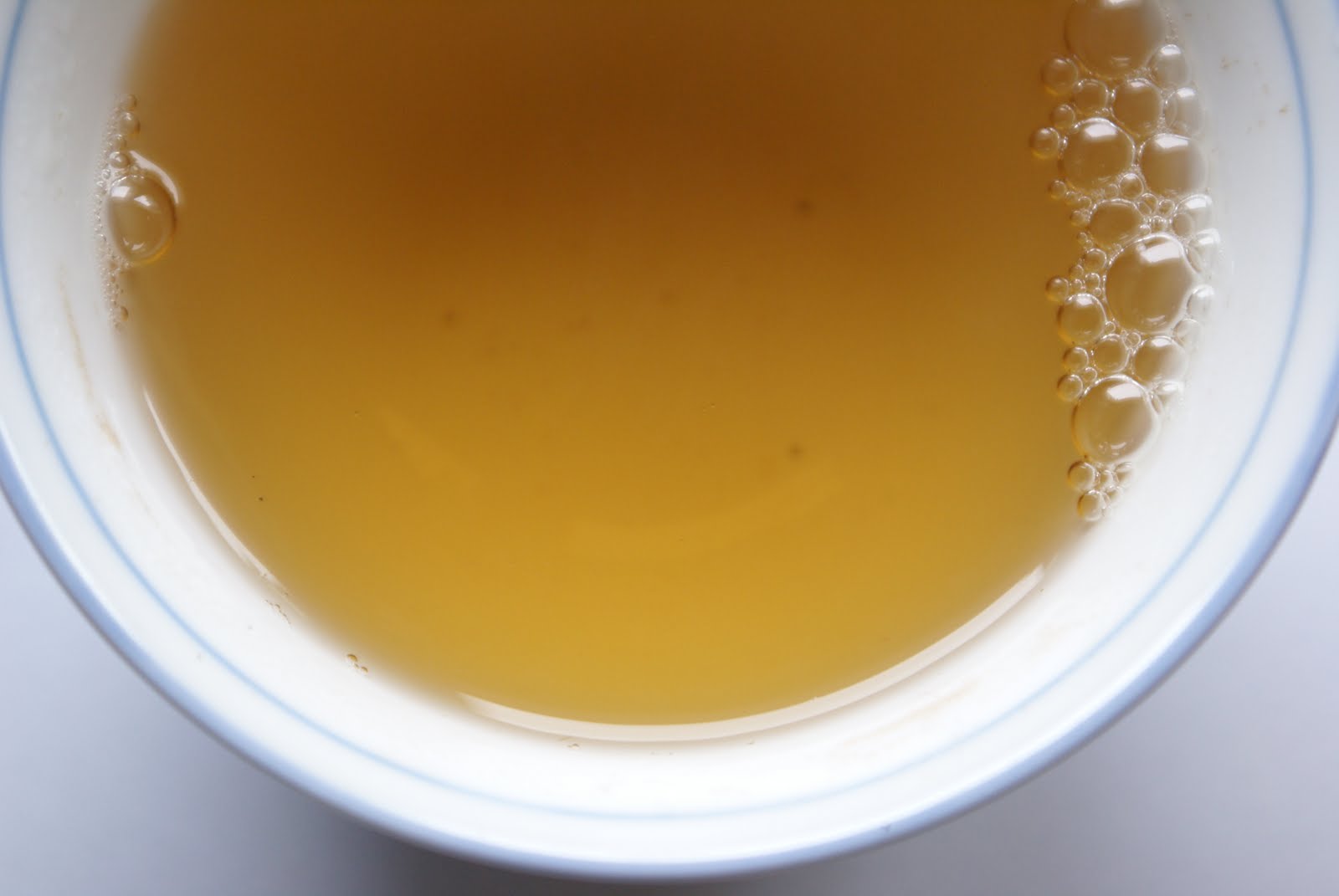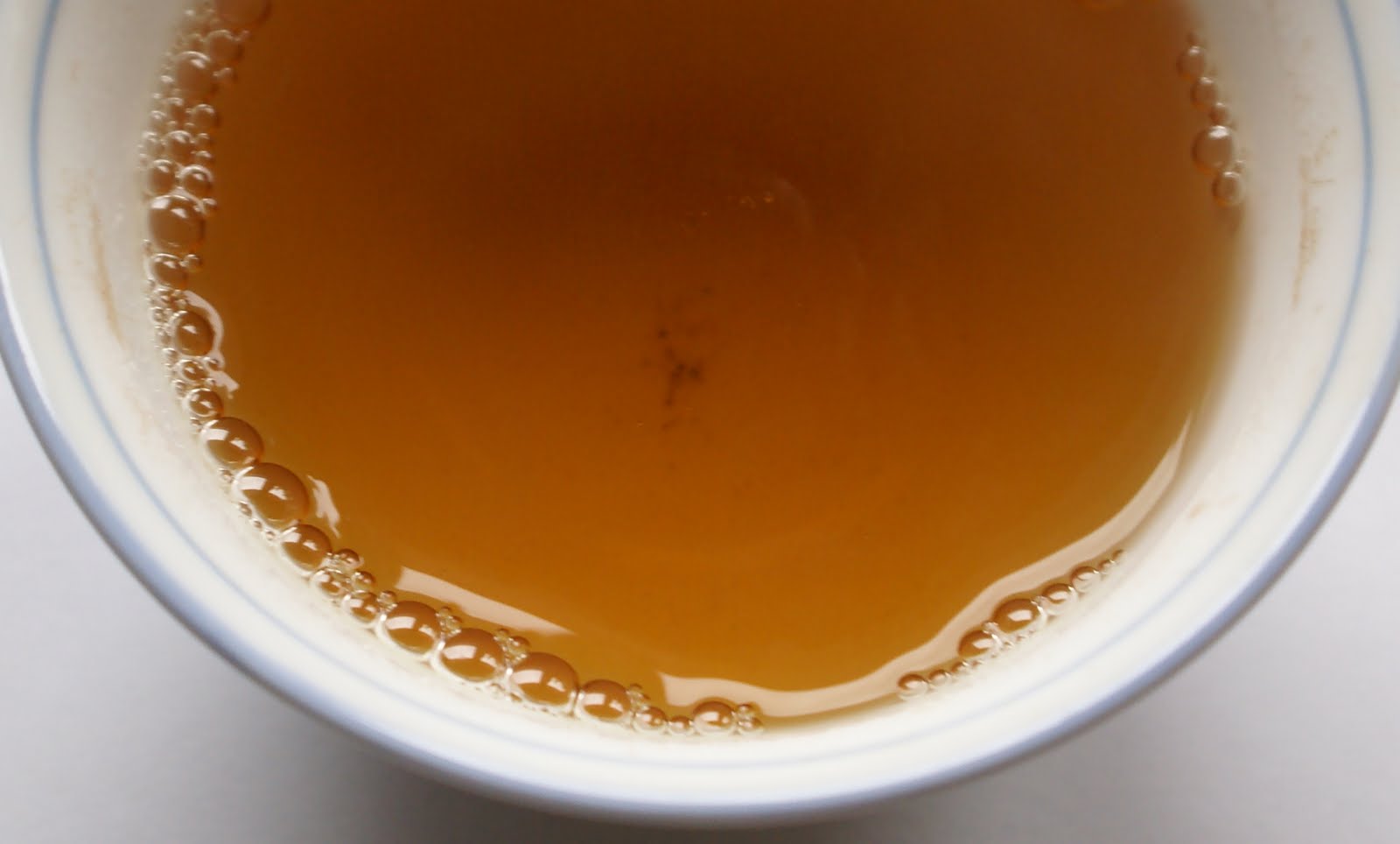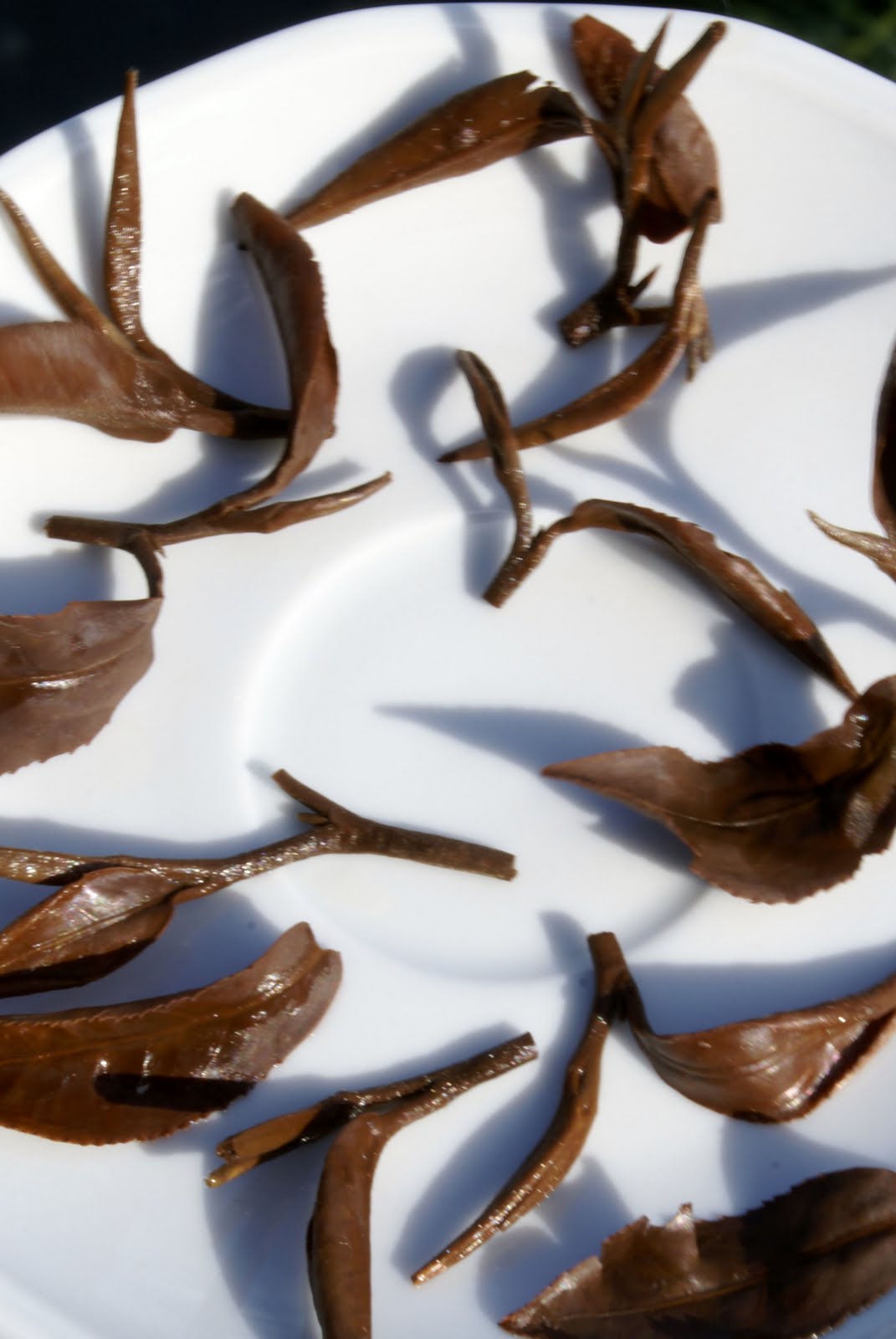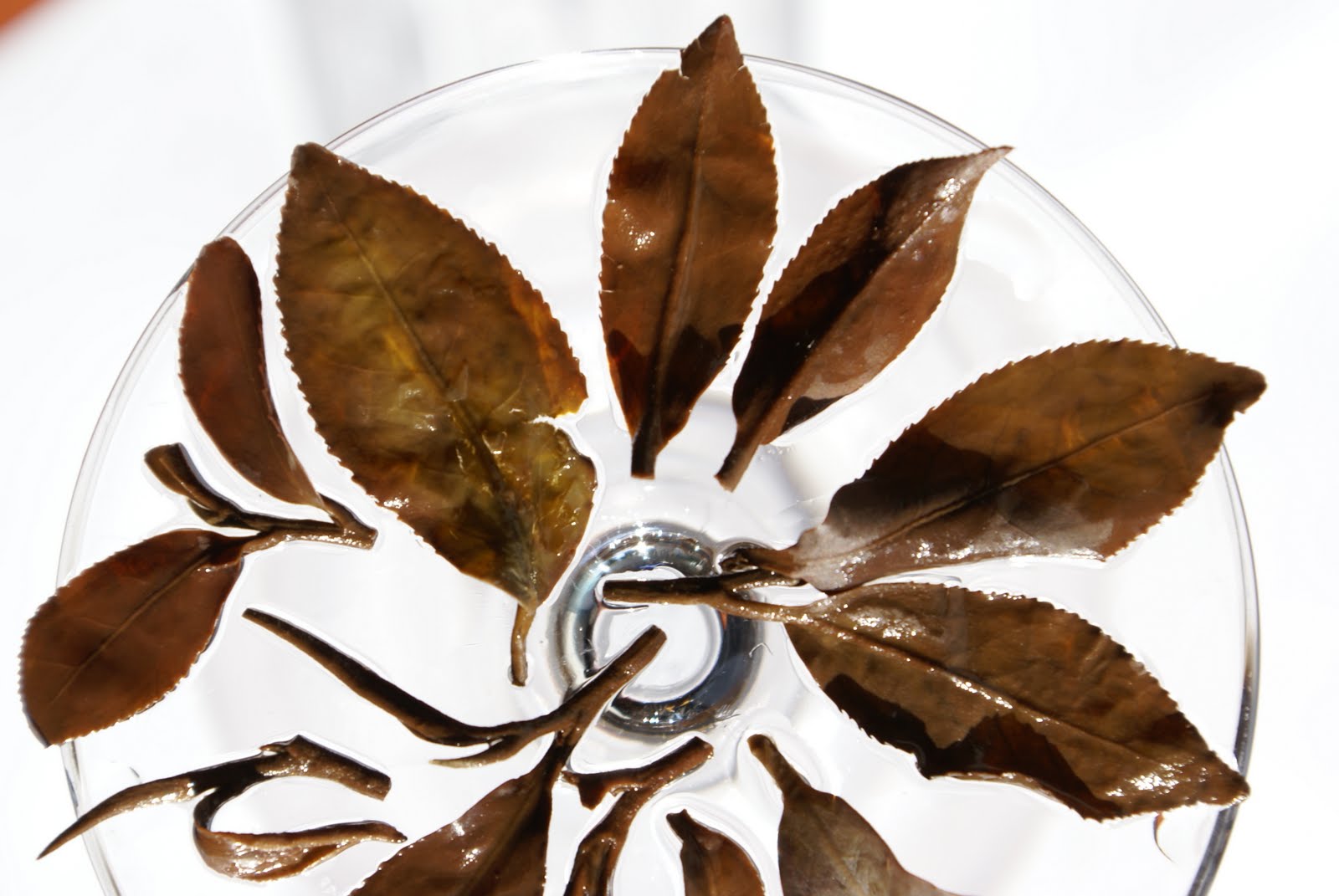Beautiful tea
Posted on 12 October 2009
Oriental Beauty (a.k.a. Baihao) is one of the most renowned tea ‘appellations’. And it’s also one of the world’s strangest teas. With its unique production method and its distinctive bouquet, it is among teas roughly what oxidative dry sherry – amontillado and oloroso – is in the domain of wine.
You’ll find an extensive introduction to Oriental Beauty here. To summarise, it’s a lowland, summer, partly-oxidised (oolong) tea from northern Taiwan. More often than not produced from the Dapa varietal, its uniqueness lies in how it’s grown: in summer, local insects called tea jassids are encouraged to feed on the leaves; their bites initiate a process of oxidation within the leaves that later translates into a distinctive, spicy bouquet. Oriental Beauty is a tea with high oxidation (>50%, in which it differs from lighter oolongs from Central Taiwan and comes close to black tea) but little or no roast.
My duo of Oriental Beauties comes from Teamasters and comprises the 2008 Hsin Chu Oriental Beauty (hereafter ‘2008 OB’) and the 2008 Hsin Chu Oriental Beauty ‘Top’ (see vendor notes here). The latter is a limited selection that includes jassid-bitten leaves exclusively. The difference in price is huge: 33€ / 100g for the straight OB and no less than 100€ / 100g (sold in 25g packages) for the ‘Top’. This latter price is more a factor of rarity and prestige than actual ‘objective’ value. (Please note Teamasters are now offering the 2009 version of both teas).
The dry leaves of both versions are distinctive and beautiful. OB’s other Chinese name is wusicha, ‘the tea of five colours’, and you’ll see this unmistakeable mix of black, dark brown, beige, and tippy white hues on the photo:
The 2008 Top seems to have somewhat smaller leaves, impeccably sorted, and perhaps with fewer brownish ‘flakes’, but the aspect is similar. The dry leaf aroma of the 2008 OB is very distinctive and preannounces the flavour of the cup. Very spicy, with hints of tree bark, Chinese medicine, oriental mushrooms, and minor dry fruits, it’s quite unlike any other tea. The 2008 Top shows a slightly more fruity (dried fruits) bouquet and the impression of lighter, less earthy spiciness is reinforced as the leaves are put in a warmed cup.
2008 Hsin Chu Oriental Beauty: brewing no. 1 (45 seconds) and 6 (2 minutes).
As you can see from the photo above the colour of the infused 2008 OB is not particularly dark. With that spicy, mushroomey, cinnamonny aroma again, we are lured to a palate of lovely balance and presence. Laden with spice and dried fruits in a crisp, light framework, this tea shows an amazing sweet huigan aftertaste and a stunning sense of refreshment. It’s not particularly deep or intense but has a remarkable cleanliness and authenticity about it. I’m also impressed by the durability. I rarely go beyond 5–6 brewings with an oolong tea but here, 10 are easily possible, with the later ones taking minutes of steeping and still yielding the same medium-bodied, intensely perfumed result.
The 2008 Top shows a subtle but evident variation to the straight 2008 OB. It seems a little more oxidative, and less formulaic in its spicy, fruity bouquet. Whereas on the nose the register seemed lighter and fruitier, on the palate we have a more structured, tannic, almost austere tea. Intensity, breadth and length are also superior. These are milimetric differences but the step up from the 2008 OB is obvious. Is it worth the extra 70€? I guess not, but that’s not the point. Teamasters’ Stéphane Erler wanted to shows the highest grade of Oriental Beauty that can be obtained, and he’s there.
2008 Hsin Chu Oriental Beauty ‘Top’: spent leaves after 10 infusions.
The best part of Oriental Beauty, for me, is looking at the wet leaf. (I find myself increasingly examining spent leaves of my teas: there’s a lot of information to be gathered). Here we have some of the most immaculately processed leaves I have encountered. It’s a classic maofeng grade (two leaves and a bud), and the leaves are small, perfectly shaped, and undamaged. They are uniformly brown in colour due to their high oxidation but look as fresh and vigorous as if they were freshly picked; there is absolutely nothing ‘spent’ or ‘expired’ about them.
2008 Hsin Chu Oriental Beauty: spent leaves after 10 infusions.
In tea as in wine quality, the saying goes, is never an accident but always the result of intelligent effort. There has been a lot of intelligent effort put in the harvesting and production of this tea. What is purely a technical quality – proper handling of tea leaves – becomes an aesthetic one. This tea embodies perfection. It is distinctive, pure, deep, intense and rewarding. My favourite tea.


